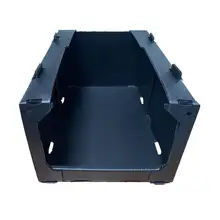Exploring Double Sided Laminating Film
Laminating film serves as a protective layer for various materials, and double sided laminating film is particularly versatile due to its dual-layered application. This category encompasses a range of products designed to encapsulate printed materials, providing durability and enhancing visual quality.
Types and Applications
The application of double sided laminating film spans across multiple industries. From preserving educational materials to safeguarding important business documents, its uses are extensive. Specialized variants like UV resistant and blackout films cater to specific needs, such as protecting sensitive plants or creating dark environments for photography or research.
Material Specifications
Materials used in double sided laminating film include polyethylene (PE) and polyvinyl chloride (PVC), among others. These materials are chosen for their durability and flexibility. Biodegradable options are also available for those seeking eco-friendly solutions. The films come in various colors, providing options for aesthetic preferences or coding systems.
Features and Advantages
The primary advantage of double sided laminating film is its protective quality. It guards against moisture, dust, and frequent handling. The film enhances the longevity of documents and images, maintaining their integrity over time. Additionally, the double-sided nature allows for complete encapsulation, which is ideal for items that need extra protection.
Environmental Considerations
In response to environmental concerns, the market has seen an increase in demand for sustainable laminating solutions. Films made from biodegradable materials offer a reduced environmental impact, without compromising on the protective qualities that users expect from double sided laminating film.
Choosing the Right Film
Selecting the appropriate double sided laminating film depends on the intended use. Factors such as the level of rigidity, clarity, and resistance to elements like UV light are important considerations. While the platform does not endorse any particular product, it provides a comprehensive range of options to meet diverse requirements.








































 浙公网安备 33010002000092号
浙公网安备 33010002000092号 浙B2-20120091-4
浙B2-20120091-4